Easy San Francisco Container Plants Drought Tolerant
In the golden state of California, it's sometimes hard to believe that every garden isn't blessed with daily, bright, warm sunshine.
The reality is that Bay Area landscapes have plenty of areas that only get limited or no direct sunshine. So if that sounds like your challenge, it doesn't mean that a shady garden has to be dreary or uninspiring.
Shade plants can be an attractive addition to many Bay Area landscapes. You just have to know about the wide variety of plant options that can make a sun-starved garden both attractive and beautiful.
An important role for shade plants in areas out of the sun
Shade tolerant plants play an important role in providing needed contrast, texture, and interest in garden areas that can sometimes be neglected or overlooked. Many shade plants also provide aesthetic design benefits of dramatic structural forms, colorful blooms, and unusual leaf sizes.
According to the California Native Plant Society | CNPS, there are a wide variety of native California plants that are perfect for a shady or mostly shady location. CNPS points out that there are important questions that you need to answer about your particular site and location before you plant anything. They include:
With this important information at hand, it makes sense to consider some of the many options and benefits of shade-tolerant plants for your next installation.
At Pacific Nurseries, we have a wide selection of plants that prefer shade in our over 36 acres of inventory. And we offer them in many container sizes from 4" to 15 gallons—and even larger for some items.
Great shade plant solutions within reach
Check out these featured specimens below that may be particularly attractive and inspiring for the shady areas in your project.
Common name | Bear's Breeches

Acanthus mollis has basal clusters of deeply lobed and cut, shiny dark green leaves that are soft to the touch. The leaf forms grow to 12–32" high and over 12" wide. This plant has an inflorescence bloom which is a cylindrical spike 12–16" long that can produce hundreds of flowers. The flowers are tubular, whitish, and lilac or rose in color.
This dramatic, big leaf, shade-lover grows in dry areas and does well in rocky and bushy places too. The large leaves and dramatic flower spike offer a great contrast to many backgrounds or small leaf hedges and screening plants. It's also drought tolerant.
Common name | Thyme-leaved fuchsia
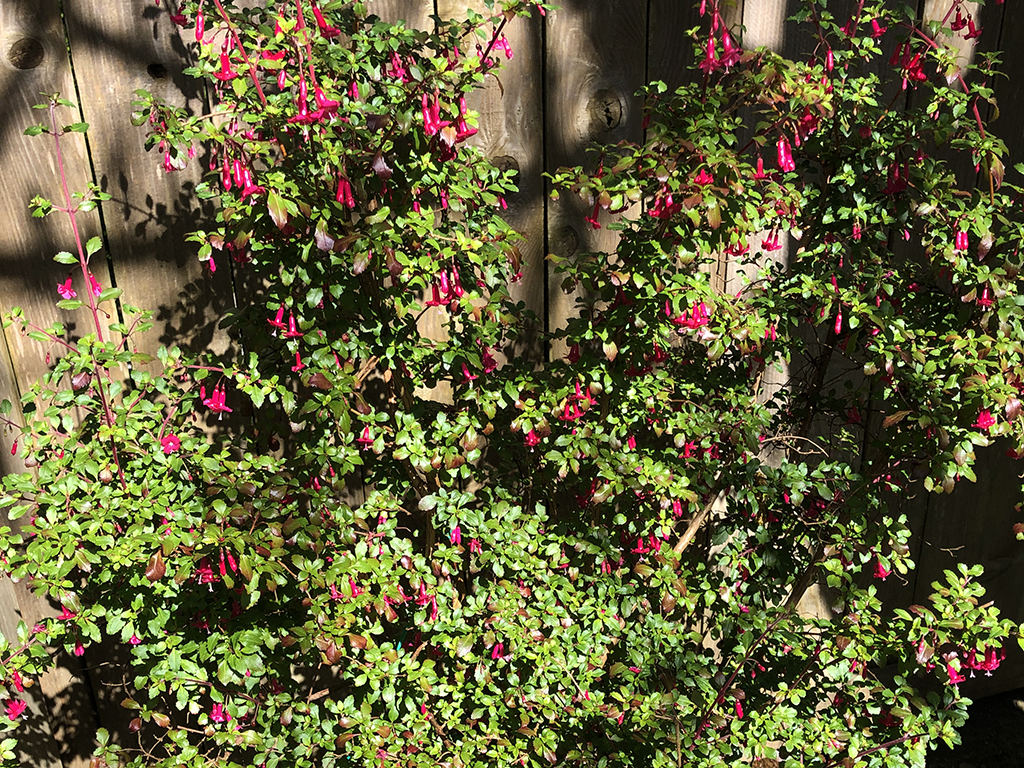
Fuchsia thymifolia is in the Encliandra group of fuchsias that come from the cool, evergreen, cloud forests of Mexico and northern Guatemala. This specimen also does amazingly well in our Bay Area climate in cool coastal areas.
This miniature fuchsia produces a profusion of pink and red mini-flowers with glossy dark green mini-leaves from early spring until early winter. It prefers partial shade but it will also grow in more shady areas. It can grow to +60" in height in the right location but looks better if it's trimmed up to be more condensed and less leggy. And if you're looking for a pollinator magnet, Hummingbirds especially love this plant.

CA Native Common name | Santa Catalina Island currant
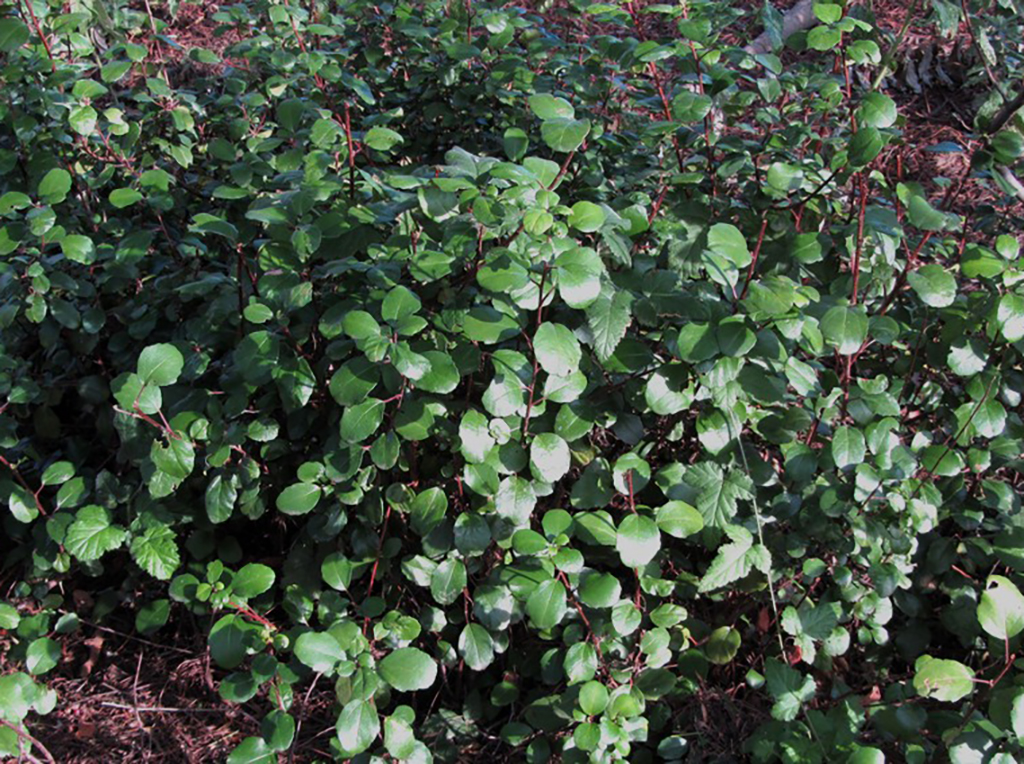
This great California native plant, Evergreen currant, grows in shade to part shade and is deer resistant. Originating from Santa Catalina Island and Baja California, this evergreen perennial shrub grows 2-3' tall and up to 8' wide. It features heavily scented dark green foliage with waxy and shiny leaves. The stems are red and the leaf venation is also reddish so the plant has a contrasting red brick with a green trim appearance.
Evergreen currant will survive dry to moderate water as long as it has good drainage. It is extremely drought tolerant in clay and is a great ground cover for dry shady areas.
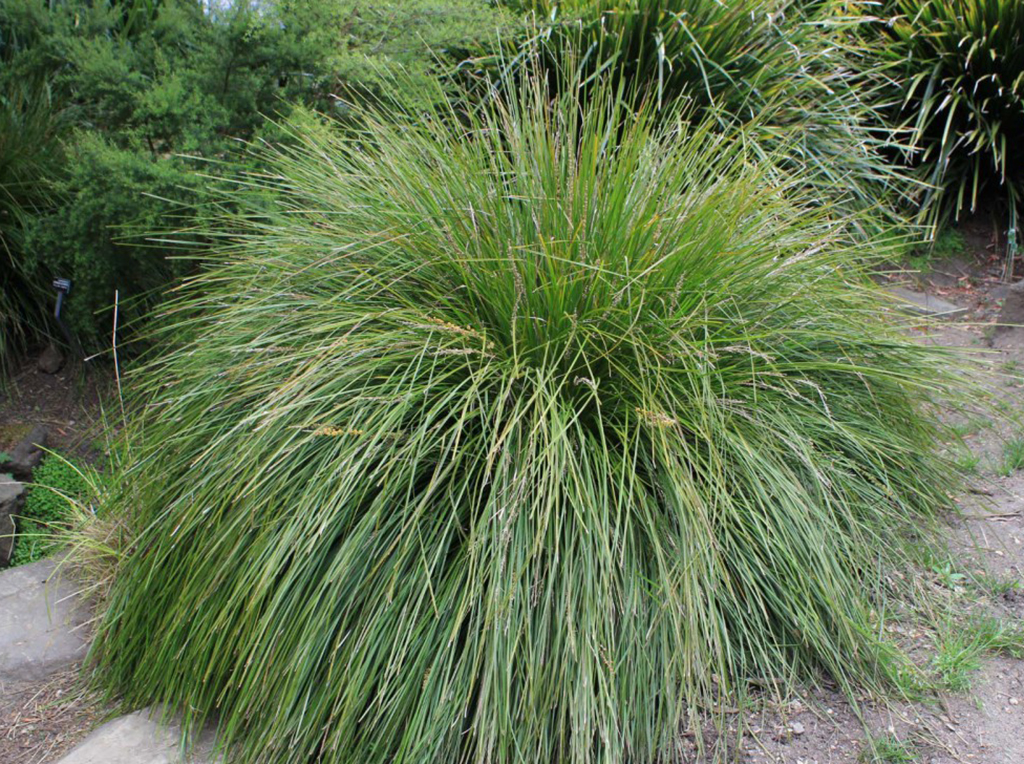
Lomandra, common name Matt Rush, is a genus with many varieties of tufted dioecious perennial herbs with long narrow blade-like leaves that arise from a central stemless base. Lomandra varieties vary in size, leaf color, and leaf blade width. All varieties are mounding plants with strap-like leaves of green or blue-green. The varieties range in size from 1 foot tall to 3 feet tall. A few of the many great attributes of this versatile plant is the ability to do well near the seacoast and to grow well in both sun or shade.
Originally from the diverse habitats of rainforests to arid areas in Australia, Lomandra has very low water requirements and is considered drought tolerant. It also grows more rapidly with regular watering. This very flexible and versatile plant appreciates being cut back hard to tight mounds no more than 6 inches tall. This aggressive cutting back cleans up older foliage and promotes new growth. 'Nyalla', 'Seascape', 'Tropic Bell', 'Little Con' are all varieties worth a look over.

Clivia plants are native to South Africa and have always been quite popular in Bay Area gardens. These unusual plants derived their name from the Lady Florentina Clive and are slow-growing stars in shady gardens.
Clivia's feature stunning blooms, which vary in color from pale orange to electric red. The fragrant, trumpet-like flowers are similar to that of amaryllis but smaller. And unlike amaryllis, clivias retain their foliage year round. They prefer somewhat moist soil and do best when they are slightly dry between deep watering's. Fertilizing once a month is also a good idea.

CA Native Common name | Giant Chain Fern
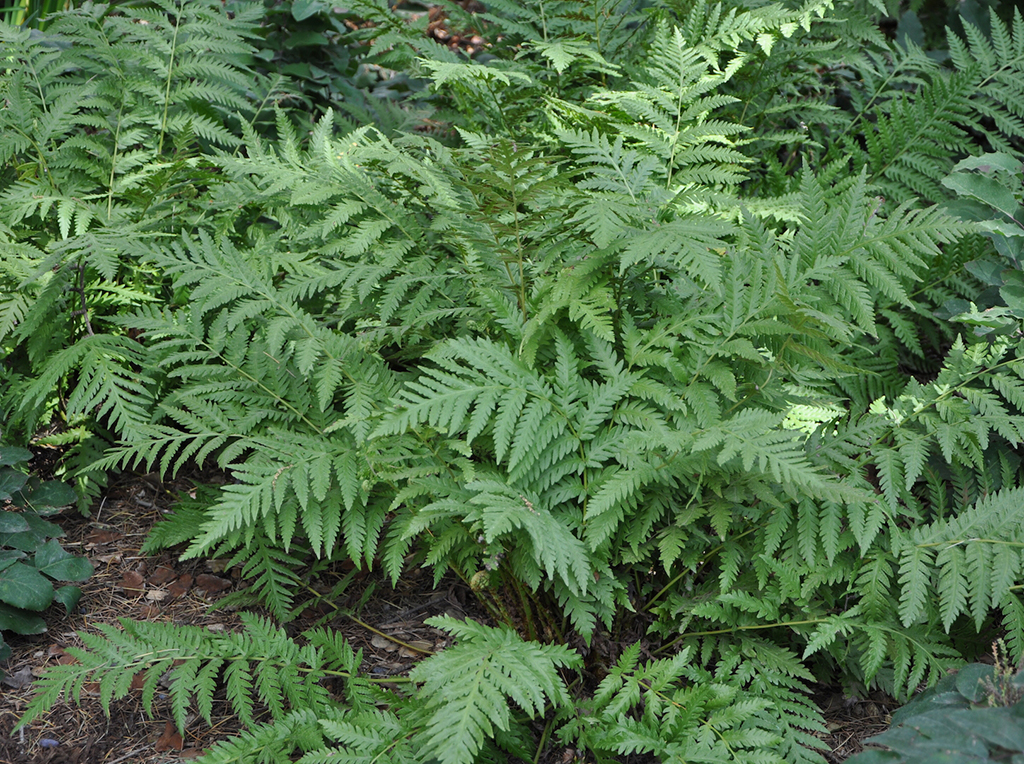
This large coarse terrestrial fern is a California native plant. It usually grows to 4' tall and wide and can reach to 7' in the right lush setting. Woodwardia usually develops multiple clumps of leaves with age and looks best when older dried out leaves are removed.
These dramatic beauties also do well with some sunlight especially in the cooler costal areas. They are hardy when the temperature drops in the winter and they appreciate well-drained soil and constant moisture.
Common name | Lenten rose
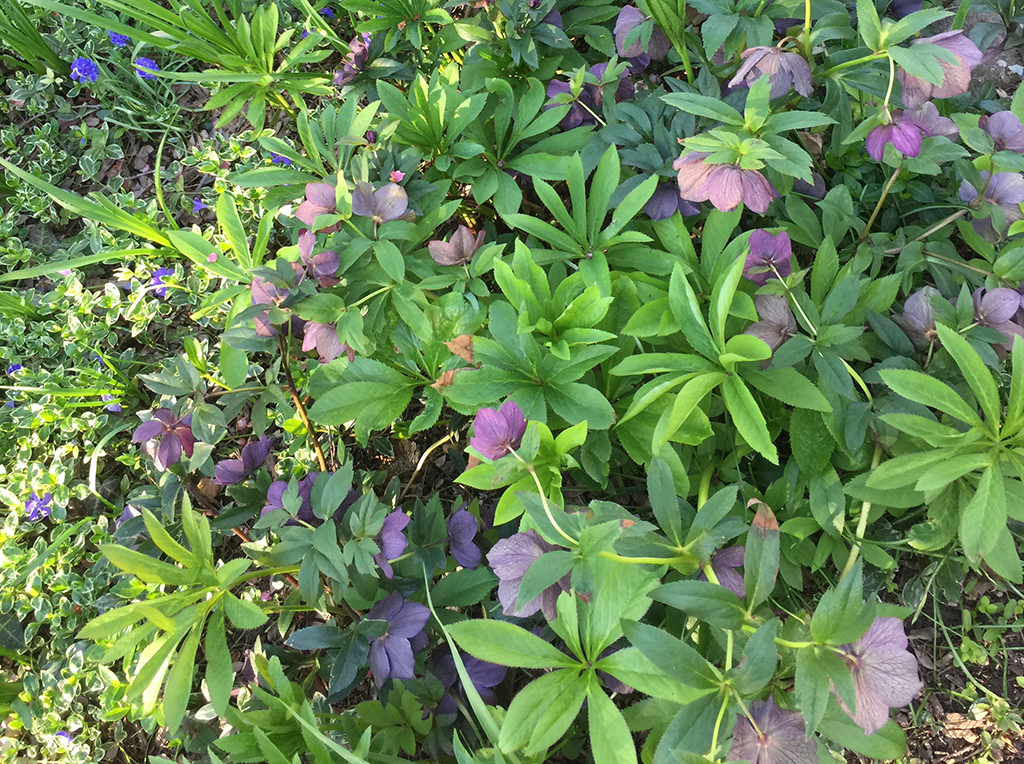
This genus of perennials with toothed, leathery leaves and distinctive blooms makes an elegant addition to a garden. The often long-lasting flowers emerge in early spring and they are available in a variety of colors from white, green, pink, purple, cream, and even spotted.
They look best when planted in groups in a shady area or woodland setting. Their distinctive foliage persists throughout the year and the flowers and foliage are fairly deer resistant. Heleborus blooms in early spring and tolerates a wide range of soils from neutral to acidic.
Common name | Japanese pieris

This showy, cascading shrub is a perfect plant solution for a woodland setting, rock garden, container, or for use as a foundation plant. With a common name of Lily-of-the-Valley, Pieris japonica, sometimes referred to as 'Andromeda', blooms with profuse, cascading flowers followed by colorful new foliage growth that can be bronze, brilliant pink to scarlet. As the new evergreen leaves mature, they turn bright dark green. It grows to 12' tall and 10' wide and produces flower buds in late autumn which cover the plant until they burst into bloom in early spring.
Pieris shrubs will grow in full shade but generally don't flower as well there. In addition, new foliage growth is usually not as brilliant. Some partial sun with shade provides a better environment to make this plant thrive. Pieris shrubs also prefer soil with good drainage and rich in organic humus.
Common name | Golden Japanese Stonecrop

This beautiful, fast-spreading succulent hates the full sun and thrives in light to full shade It's a semi-deciduous, low-growing ground cover that can quickly spread to 18″ wide. From southern Japan, it does best in moist, shady, rocky areas.
With bright gold foliage that turns chartreuse in late Summer, it blooms midsummer with yellow flowers that are nearly unnoticeable against the golden foliage. This plant looks great in rock gardens between crevices and also along a shady border path.
Common name | Japanese anemone
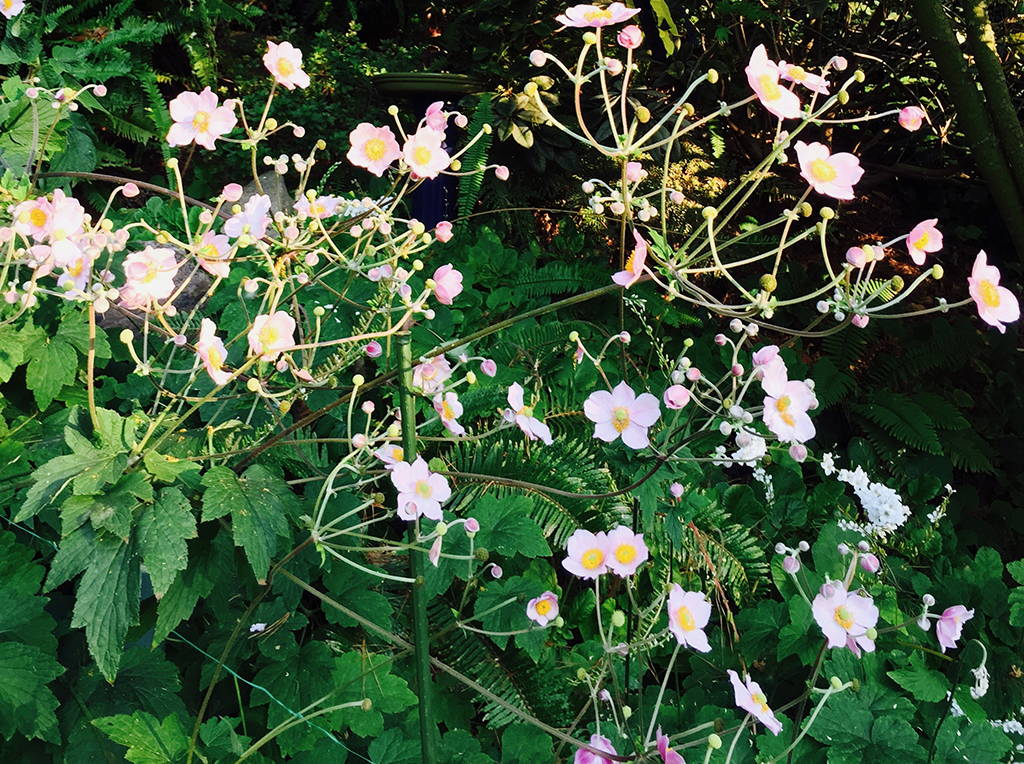
As a dramatic long-lived plant, Anemone hybrids can be grown in partial shade or full shade. Some stray and ramble. And some varieties enjoy popping up through stonework or paving close to buildings or paths. Japanese anemone is deer-resistant and also looks great in wilder gardens. A. hupehensis and A. tormentors are great varieties of Anemone.
These beauties flower in late summer or autumn producing simple saucers in white and various shades of pink. The flowers open from round, silk-covered buds, and pollinators just love them. Japanese anemones, like many Asian plants, prefer good drainage and fertile soil that does not become waterlogged in winter. Once established they can be difficult to eradicate, so consider where you plant them in a landscape.
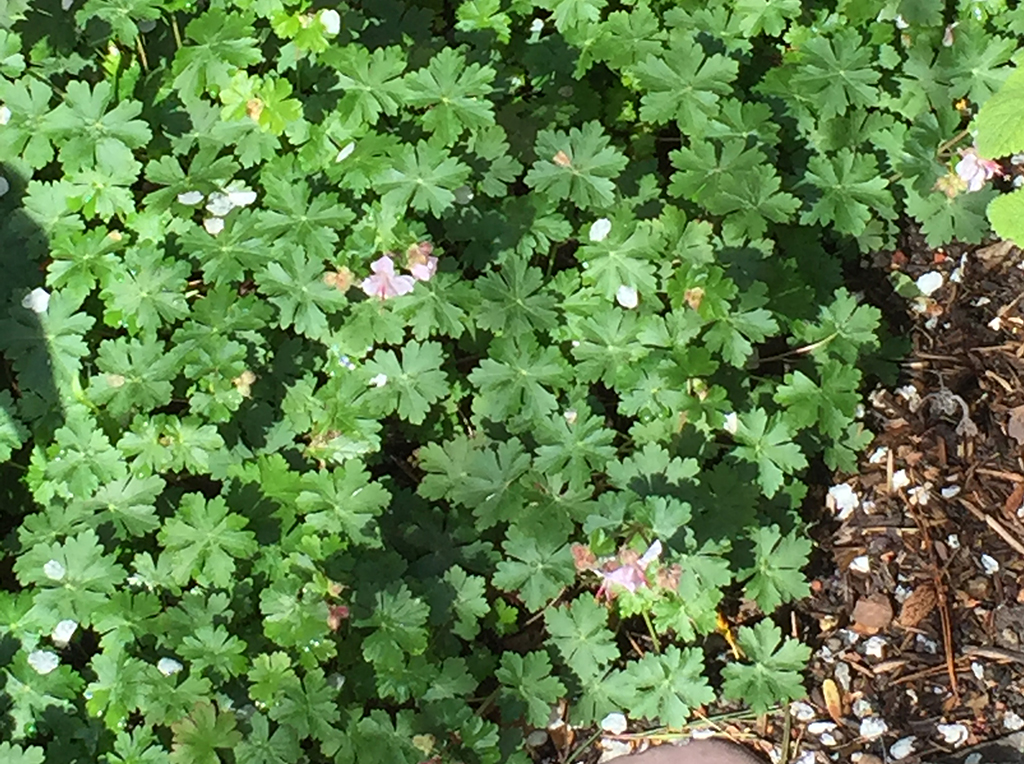
This hybrid geranium is a spreading, rhizomatous plant that typically grows 6-10" high with aromatic round lobed, medium green foliage that is slightly glossy. Some might consider it a very pale pink geranium. It's an easy-care perennial that performs best when planted as a border and in containers.
Masses of 5-petaled white flowers (3/4″ diameter) which are tinged with pink at the base of each petal (pink throat-like centers) and pronounced pink stamens appear in late spring through summer. 'Biokovo' runners extend to spread this shade-tolerant beauty to form a soft foliage carpet. This plant requires occasional watering and can tolerate full sun. But it also does quite well in shade.
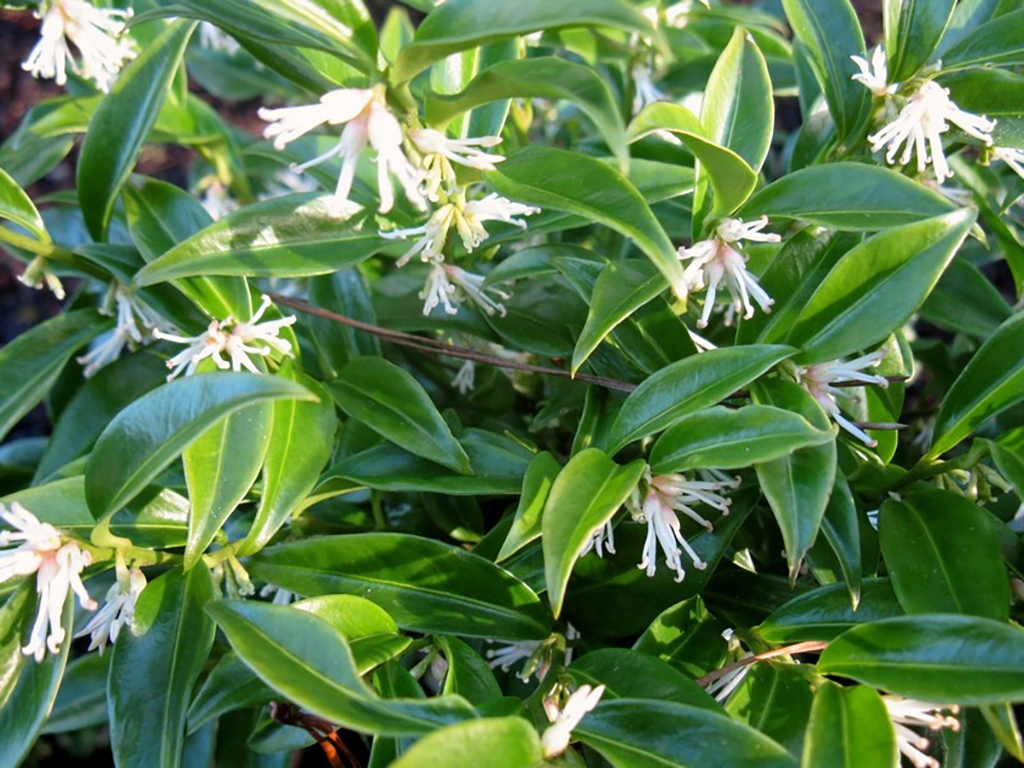
In the late winter season or very early spring, when most plants are looking sad or asleep, this attractive beauty sports sweetly fragrant, very tiny flowers with dark red 1/4″ berries which ripen to black. Consider locating this small native shrub from China near entry passages, widow openings, or where the flower fragrance can be appreciated by those passing by.
Commonly called fragrant sweetbox or fragrant sarcococca, it is a dense, low-growing, broadleaf evergreen shrub with a compact habit that typically grows to 3-4′ tall and as wide. It features sharp-pointed, somewhat leathery, glossy deep green, evergreen leaves that are 2 1/2″ long. Sarcocca stays very green in dense shade and it does well when located in the darkest corners. It prefers acidic, organically rich, moist, and well-drained soils. It's also relatively water-wise once established. Sarcococca ruscifolia, confusa and hookeriana var. humilis are all great options.
Want to know more about shade-tolerant plants?
If you want to discuss or learn more about great shade tolerant plants for your project, feel free to contact any of our experts at Pacific Nurseries or call 650.755.2330.
As both a grower and a plant broker, we're ready to work with you to provide just the right plants that will make your shady landscape location a smashing success. We can also provide an Estimate for any item just by attaching your plant list to our convenient online estimate form.
Share your favorite shade plant.
Have you recently installed or found a great shade-tolerant plant? Share your success with our community of Bay Area landscape pros and leave a comment below. We look forward to hearing from you.
Source: https://pacificnurseries.com/12-great-shade-plants/
0 Response to "Easy San Francisco Container Plants Drought Tolerant"
Postar um comentário